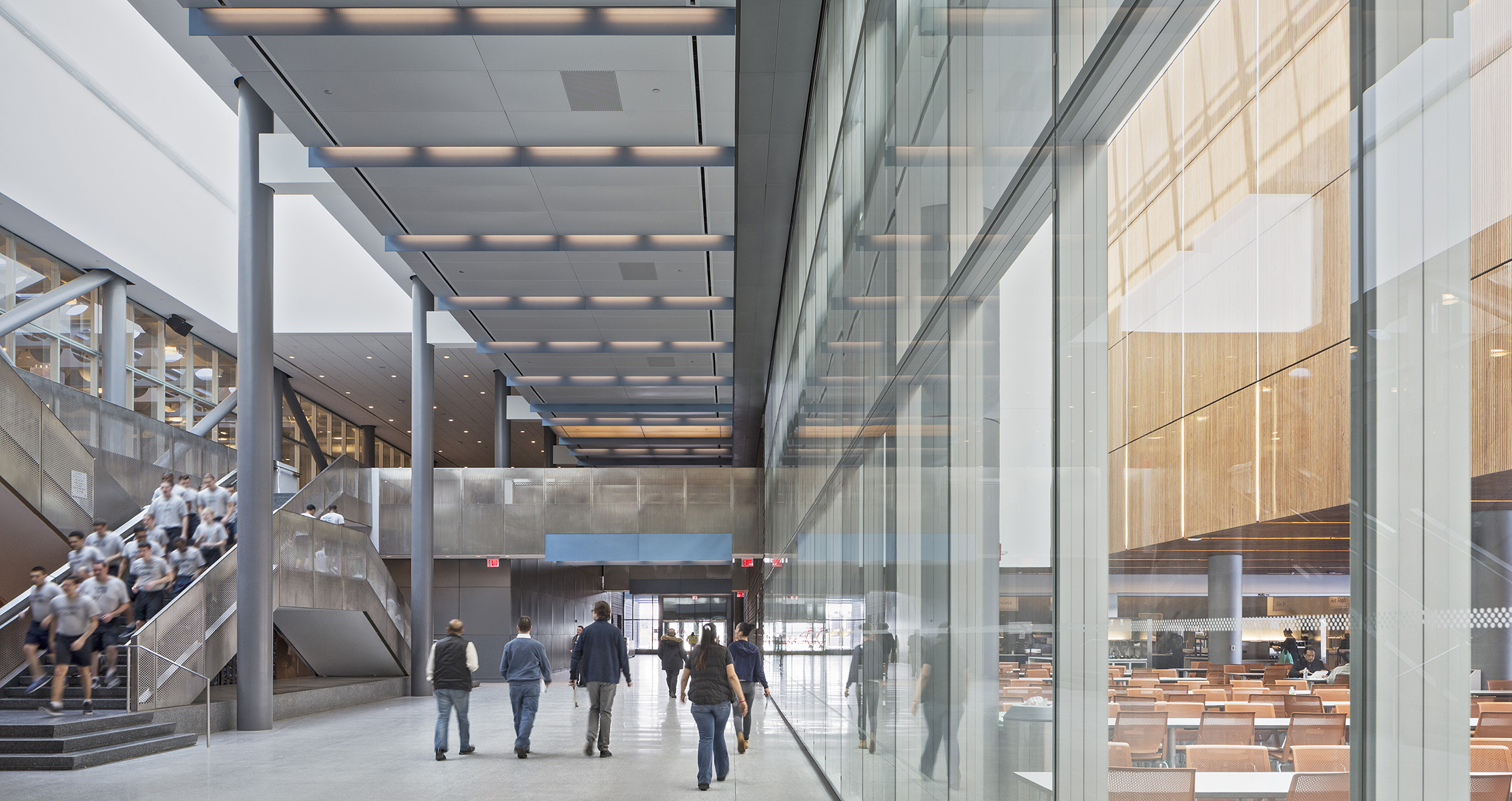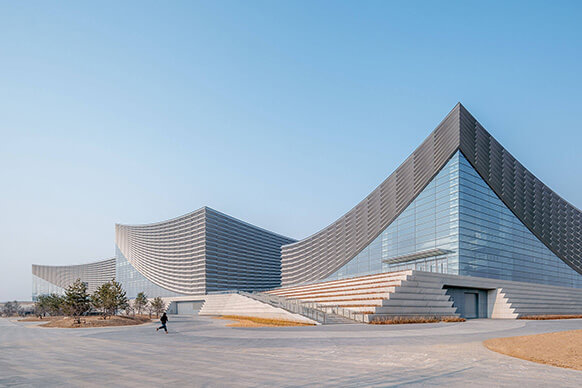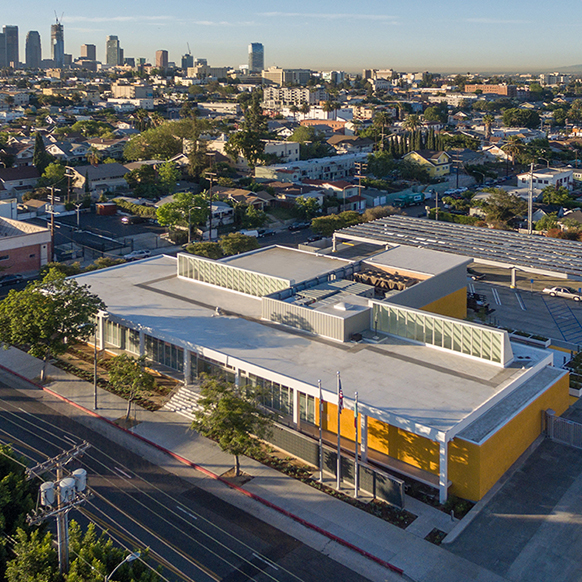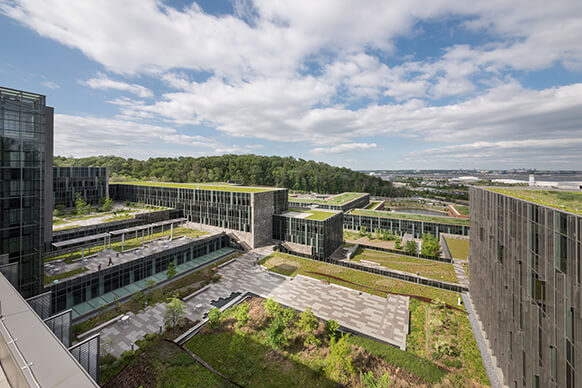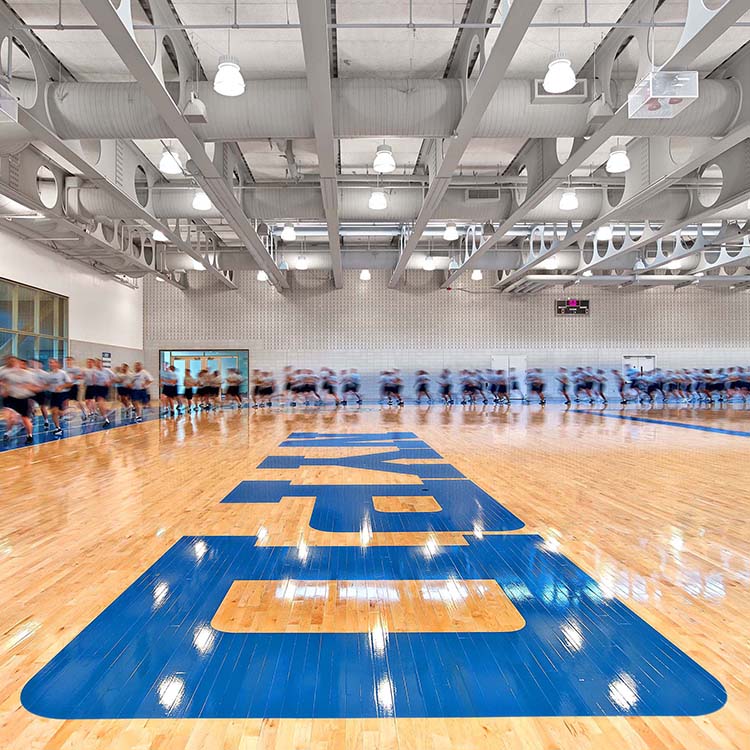
New York City Police Academy
Training police recruits has emerged as a focus in major U.S. cities, with fast-evolving considerations of public safety, community outreach, and technology adoption.
The New York City Department of Design & Construction engaged our team to design a consolidated campus to serve all 50,000 members of the New York City Police Department.
The design story takes place on a massive 32-acre underutilized and environmentally-challenged brownfield site, which we recaptured into a highly sustainable and resilient new campus. The project improves the site and at the same time, enhances occupant conditions. For example, in response to issues of site flooding and its mission critical nature, we designed all infrastructure above the 100-year flood plain, and at the same time our team deployed Active Design principles to boost occupant health and well-being.
As such, this has been the first building ever to apply for the LEED Active Design Innovation Credit, and it is also the largest public building in New York to achieve LEED Gold certification.
We are proud to have delivered for the city a campus that enhances the NYPD’s ability to protect the lives, rights, property, and dignity of all New Yorkers and visitors.

Pena Mora, Commissioner (former), New York City Department of Design and Construction
The New York Police Academy has set a new benchmark in environmental sustainability for the City of New York. The many sustainable design accomplishments of the building were recognized when the project achieved LEED NC Gold, the largest public building in New York to achieve that rating.
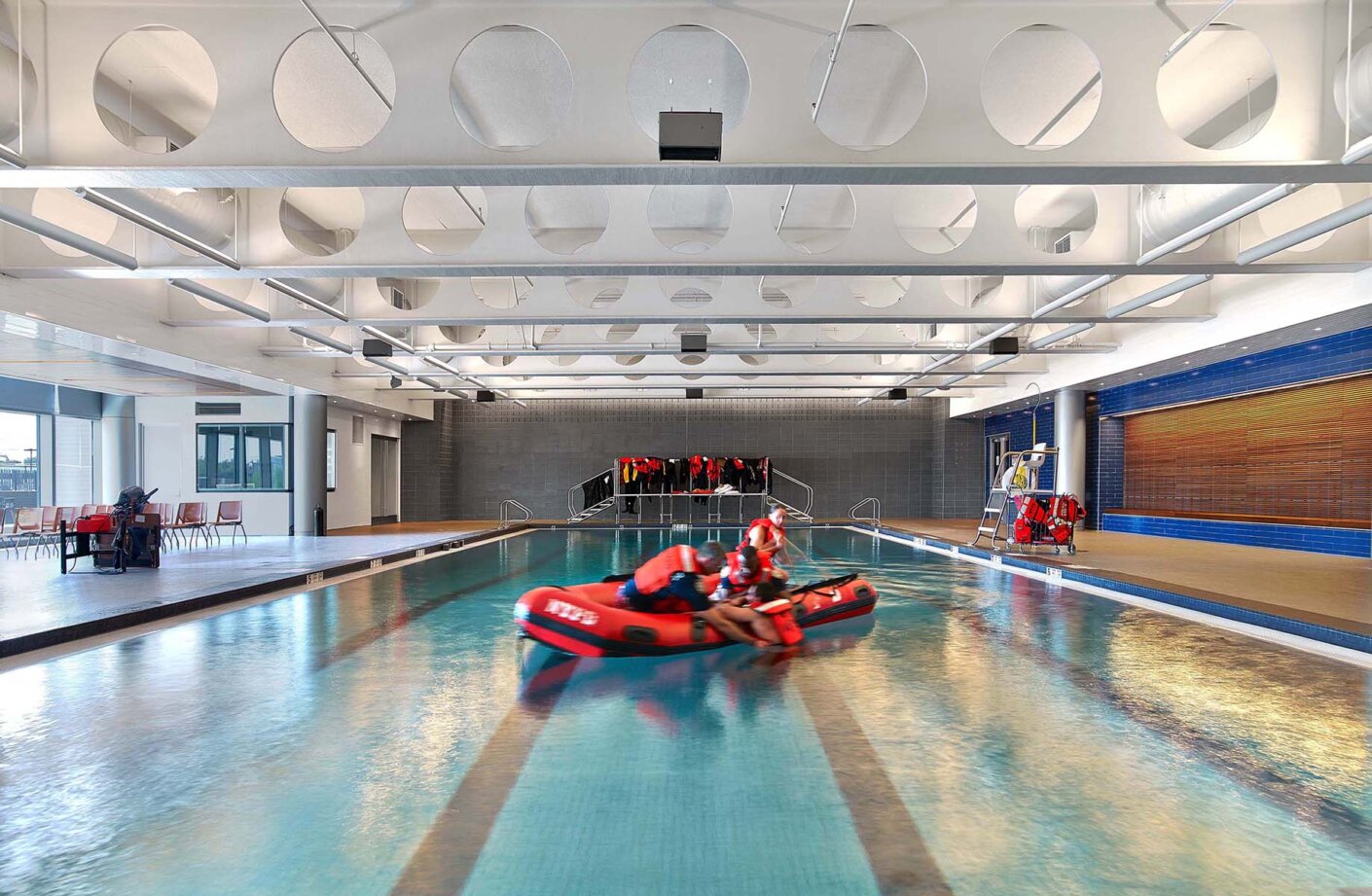
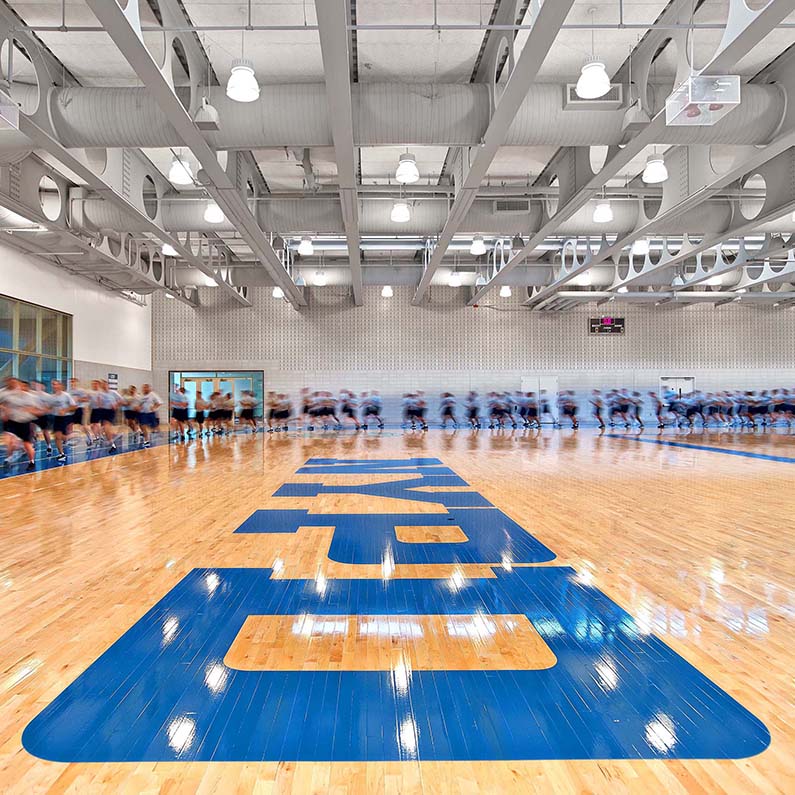
A wide pedestrian link extends the length of the campus and serves double duty as the conduit for the building infrastructure hidden overhead.
The exterior provides shading, controls solar gain, and optimizes daylight. Shading devices serve double-duty as light shelves, bouncing daylight deeper into interior spaces.
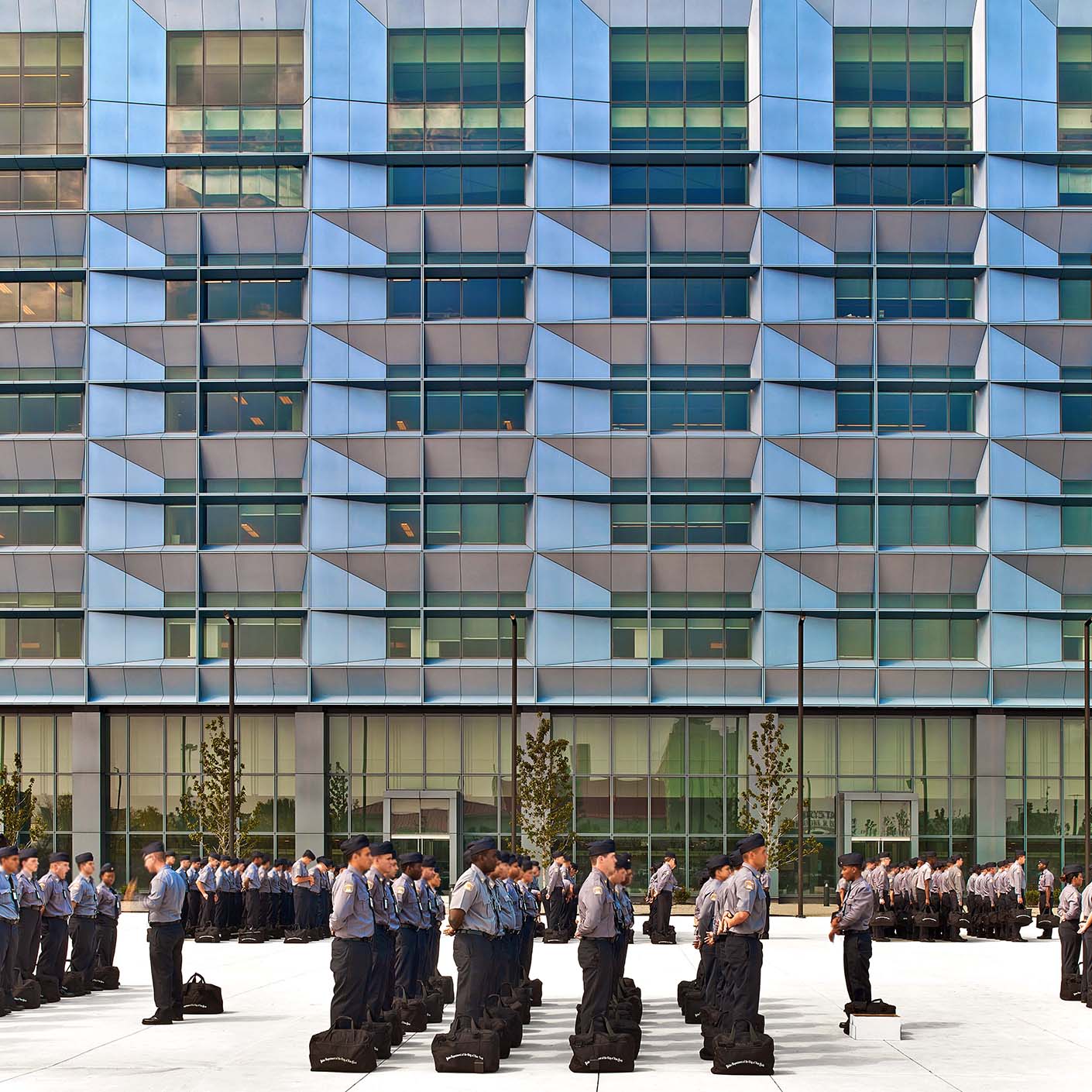
The Police Academy is an example of how design and construction can be used to fundamentally improve an existing site, restoring ecosystems and connecting back to the neighborhood. The NYPA site functions as a natural filtration system for the adjacent neighborhood’s stormwater, a 5-acre landscaped bioswale naturally cleans the water of toxins and oils before releasing it to the nearby Flushing Bay. Some of the water is retained on site and used to flush toilets, thereby reducing the burden on municipal water systems.
